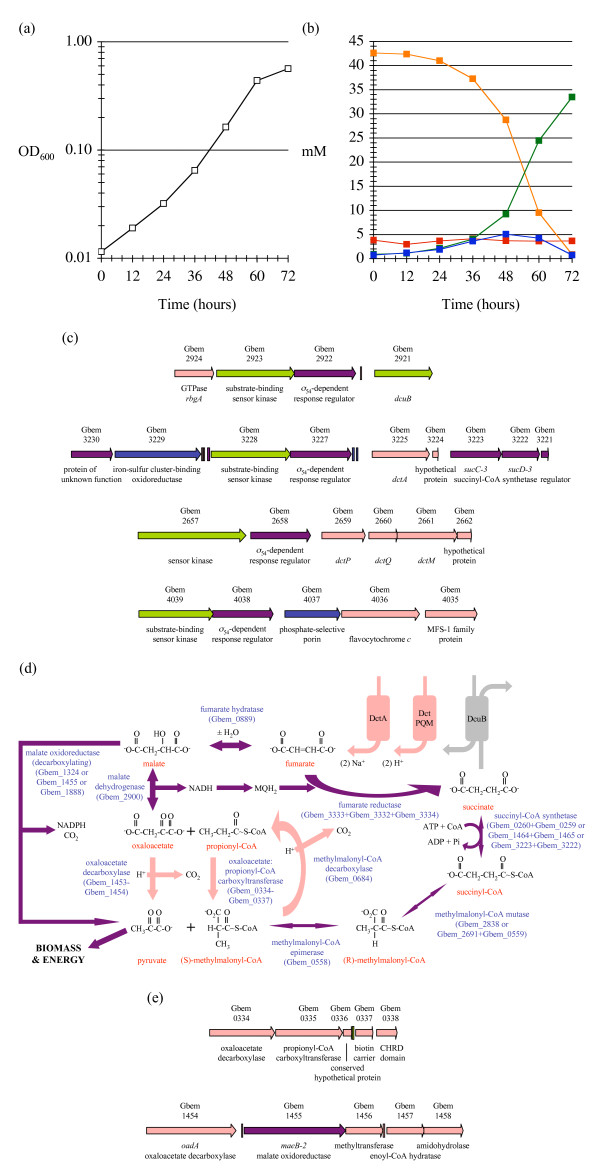Figure 2.
Growth of G. bemidjiensis by disproportionation of fumarate. (a) Growth of G. bemidjiensis with fumarate as sole electron donor and electron acceptor (white squares). The mean of quadruplicate measurements is shown; variation was negligible. (b) High-pressure liquid chromatography measurements showing consumption of fumarate (orange squares), excretion of succinate (green squares), transient excretion of malate (blue squares) and unaffected trace amounts of extracellular acetate (red squares) during growth of G. bemidjiensis with fumarate alone. (c) Organization of fumarate transporter genes. Genes unique to G. bemidjiensis (pink arrows) are found in proximity to genes that have orthologs in either G. sulfurreducens (green arrows) or G. metallireducens (blue arrows), or both (purple arrows), along with multicopy nucleotide sequence features (rectangles; same colour code). The fumarate transporters are encoded by dcuB (dicarboxylic acid exchanger), dctA (sodium-dependent), and dctPQM (proton-dependent). (d) Predicted pathways of fumarate disproportionation by conversion to pyruvate. Enzymes that have orthologs in both G. sulfurreducens and G. metallireducens (purple arrows) constitute the decarboxylating malate oxidoreductase pathway, which is inactive when the only means of fumarate transport is the fumarate/succinate exchanger DcuB, as in G. sulfurreducens (grey arrows). The unique fumarate transporters and enzymes of G. bemidjiensis (pink arrows) make possible two other pathways involving different oxaloacetate decarboxylases. (e) Organization of oxaloacetate decarboxylase genes; the colour code is the same as in (c).

